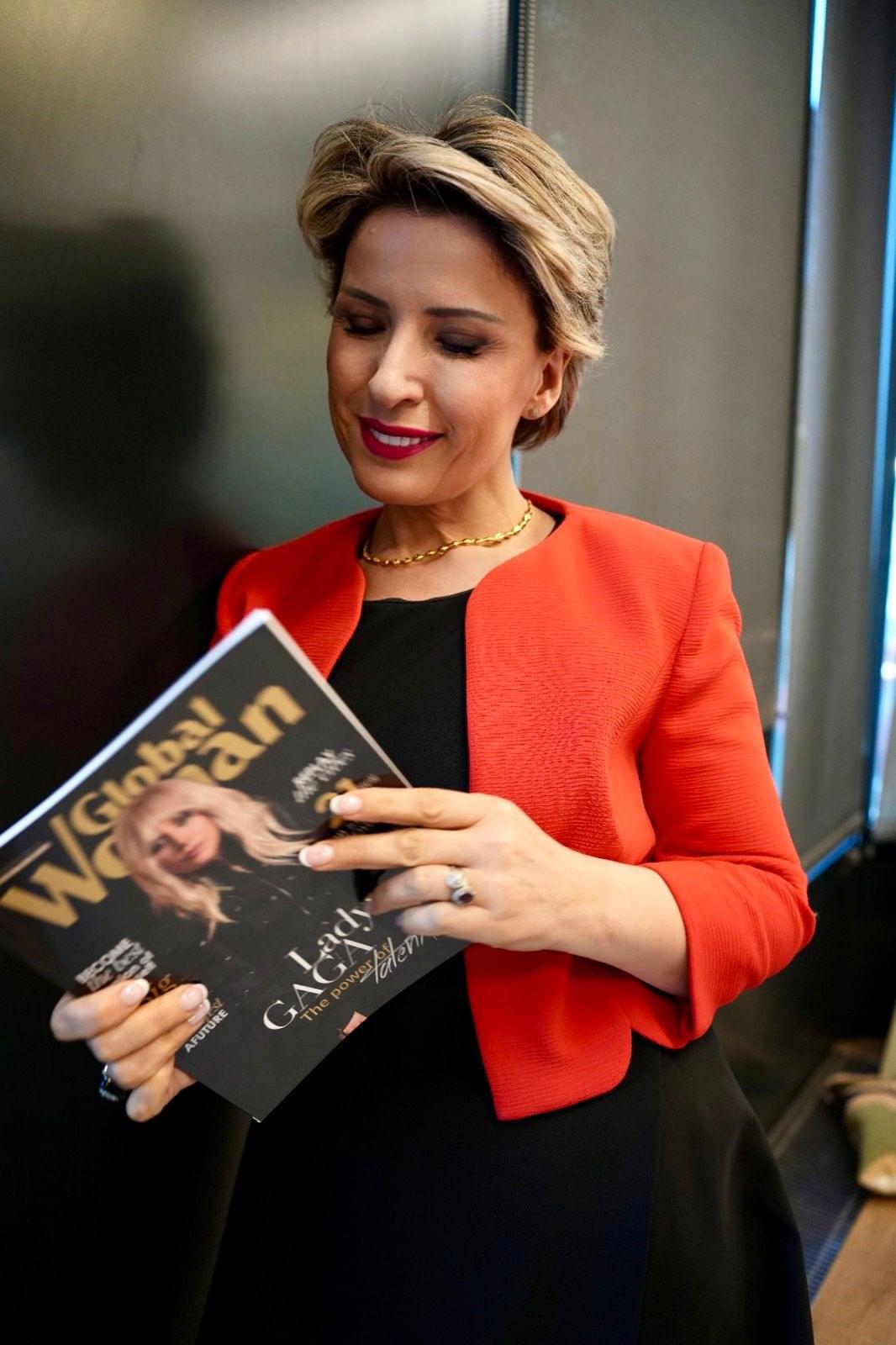Aura Imbarus: I have always belonged to the world
MY HIGH HEELS ARE ECHOING on the narrow, cobblestone streets of the medieval city of Sibiu or Hermannstadt, first mentioned in 1191 – in a document of the Vatican, under the name “Cibinium,” due to the river Cibin that flows through the city, while memories of my childhood are invading me like white pigeons returning home to their nest. My brisk morning walk ends at Cafe Wien, which not only bears the name but truly is a piece of Vienna through the ambient, yummy food, and the Austrian music broadcasted on-line inside the Café.
Here I am in Transylvania, Romania, sitting in a Viennese café, ordering my morning deadly sinful apple strudel, a German dessert, with an Italian cappuccino when the cage-look-alike rattling of my mind comes to a stop. Voices speaking English and French can be heard loud and clear. Two Asians are ordering a chocolate croissant that only the though of it makes my mouth watering.
Where am I? Is this Sibiu, in Romania, the Romania I grew up in? How come there are so many foreign languages spoken in this tiny place?
Sibiu, the cradle of my life, still has the chestnuts of my adolescence but they are now stronger and branchier; the mild breeze still carries the fragrance of the roses from my Grandma’s garden all the way to the railways where the long siren of the trains is still reverberating in my head like it was yesterday. I still feel my mother’s soft hand holding mine, like it was a moment ago, the way she used to when she was taking me to the German kindergarten, or, for eight continuous years, to ballet to learn poise, posture, and aesthetics.
The untainted Liar’s Bridge, the first iron-cast bridge in Romania, built in 1859 over the street that connects the upper-town to the lower-town, which, as the legend said no one was able to stand on it and tell a lie without the structure collapsing, is still standing high and tall. Turnul Sfatului (The Council Tower) is still there, reminding me of my first kiss, the ditching of my French classes, the crazy dancing under the summer and the barefoot running in the rain and finding cover inside its dark corners. Bruckenthal Museum, housed in the palace of Samuel von Bruckenthal, former governor of Transylvania, still shines through while the soft morning gust is whispering into my ears its secrets of all the paintings belonging to the main European schools, from the 15th to the 18th century.
I really need to hold my breath for there are so many architectural styles, from Gothic to Baroque and Renaissance, coming together like the petals of a daisy at the crack of dawn. Everything is still pristine while being filled with hundreds of years of history.
What has changed?
One of the answers could be that in 2007, Sibiu was named Cultural Capital of Europe and was ranked by Forbes as the 8th most idyllic place to live in Europe. Sibiu, “The medieval charm of Transylvania” is perceived as a city of art and culture and there are so many reasons why. Astra Museum of Traditional Folk is the most beautiful open-air museum in Europe, The Big, Small and Huet Squares similar to the Italian piazettas, the medieval towers: the Arquebusiers, the Potters, the Carpenters, the Thick, the Stairs, the Gate, the Gunpowder and the Leather Dressers’ Tower, stand still and high.
As my mind is swinging from past to present and vice-versa, my eyes are taking in like under hypnosis the vividness of the colors of the three level brick buildings’ facades cracked open by the mystical eyes -lens-shaped skylights – of the slanted roofs. That “sense of constant scrutiny that pervaded us like a ghost of old Vlad the Impaler, whose castle still stood on the other side of the Carpathian Mountains from my home in Sibiu,” (Out of the Transylvania Night), is not there anymore, for the country has been enjoying a democratic regime since Dec 25, 1989, so maybe that’s the answer to my question, but I don’t think it truly is.
Years might have passed by, environments might have changed, architectural designs might have been modernized, but the REAL change is not coming from outside; it is not coming from the influx of Western world into a former Eastern Communist block country; it is coming from inside, from developing a sense and a taste for multiculturalism, for multiracial, for multiethnic.
I stopped looking at myself as being different but just being human. I don’t belong to Romania; I never did. I have always belonged to the world, and the world has always been inside of me. I am all those foreign languages; I embody all of those foreign cultures; I have all those foreign bloods and races in me. I am the world and the world is inside of me. William Blake was right when he asserted that “To See the World” in its perfect state and to see yourself one with it is coming from being present, loving, and aware.
To see a World in a Grain of Sand
And a Heaven in a Wild Flower,
Hold Infinity in the palm of your hand
And Eternity in an Hour.
ARTICLE: AURA IMBARUS, PHD
Clinical hypnotherapist, motivational speaker, and author of the Amazon best-seller – “Out of the Transylvania Night: A Story of Tyranny, Freedom, Love and Identity”





